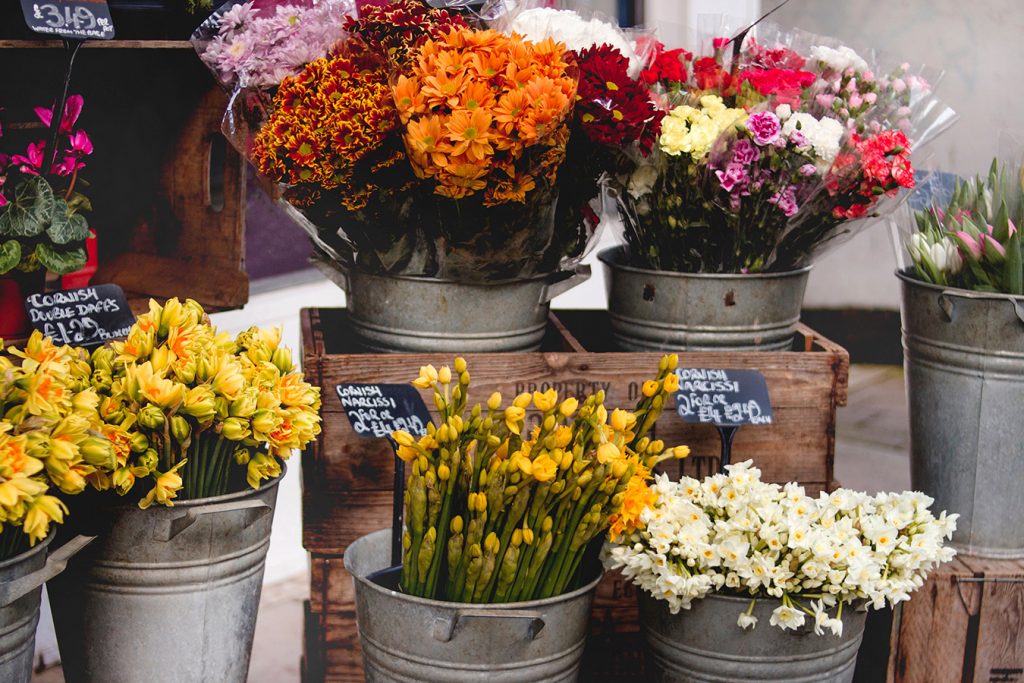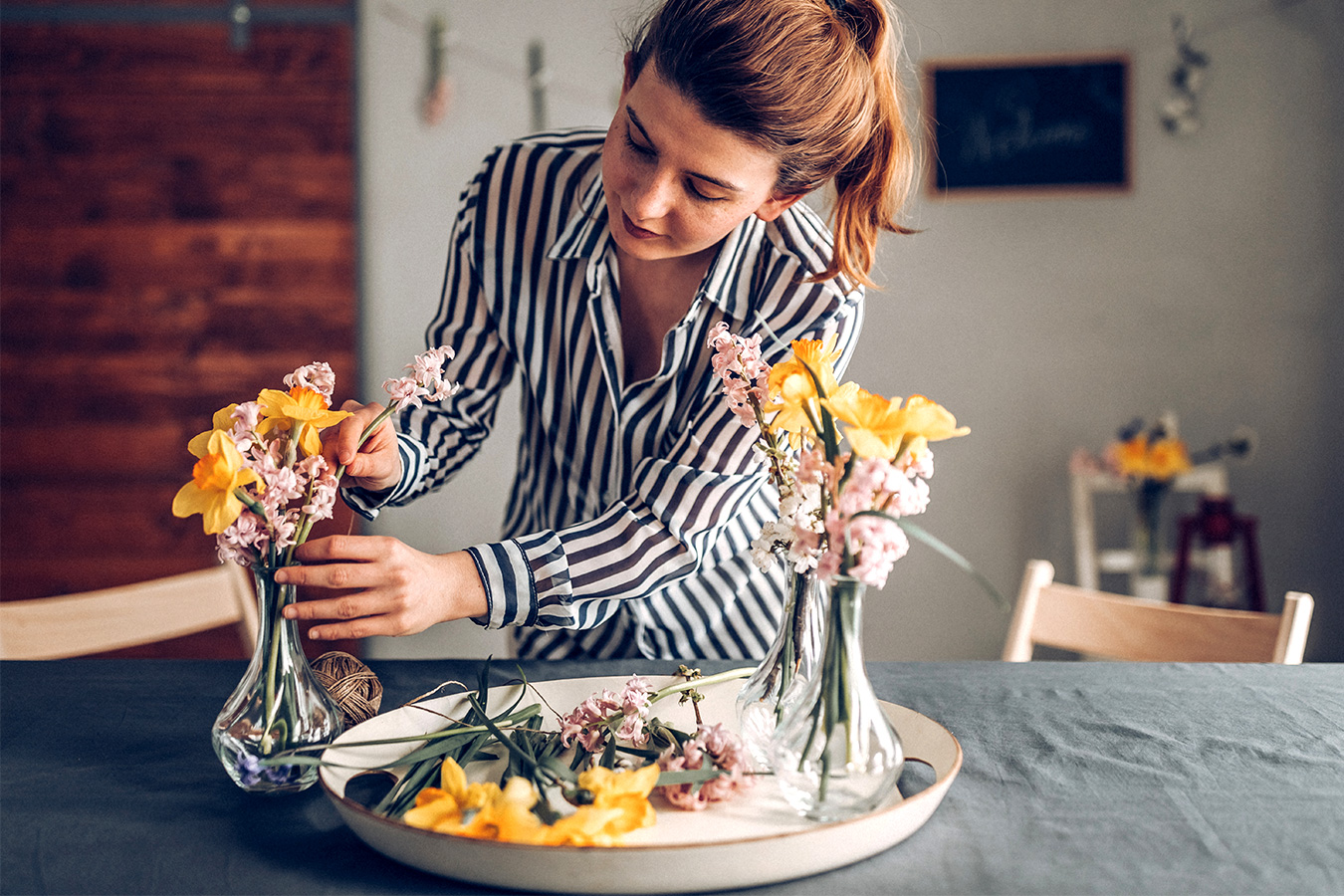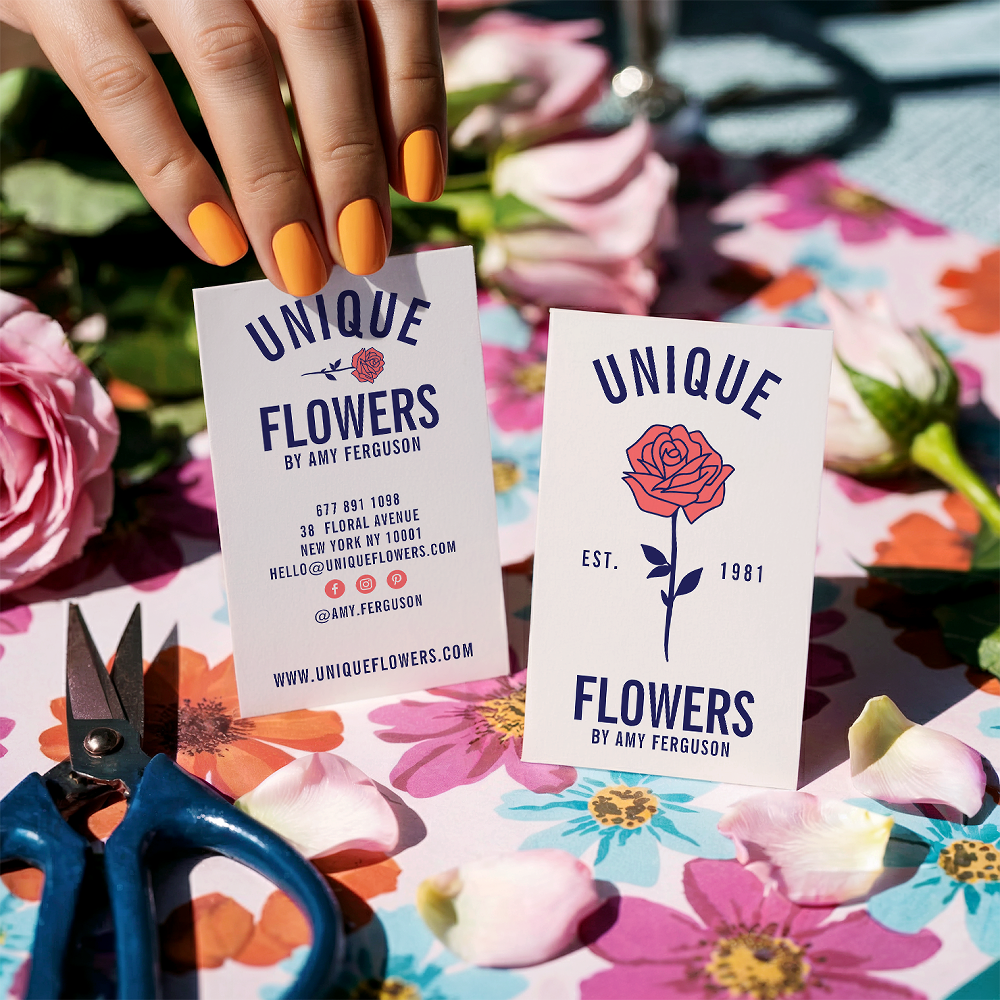If you’ve ever walked into someone’s home or business and been floored by their beautiful floral arrangement, you know how striking an elegant display can be! But who can afford to buy an arrangement every week? Fear not! With some simple tips and tricks, you can use store-bought flowers and greenery and easily make your own arrangement at home. You’ll have your guests thinking it came from a pro! Read on to learn more.
Remove the brown or bruised petals from the outside of each flower
Often times when you buy flowers, the petals on the very outside might appear brown or bruised because of damage caused by transporting them. To give them a little refresh simply remove any damaged looking petals from the outside of each bloom.
“Open” the flowers up by separating the petals
We’re all made to believe that flowers are very fragile and shouldn’t be touched too much, but they are more resilient than you think. If your flowers aren’t completely opened up, feel free to gently spread the petals apart with your hands. Flowers with several petals like roses or carnations will greatly benefit from this step.
Remove the bottom leaves from the stems
Using your hands or a stripping tool, remove the leaves from the bottom of each stem. You can keep the leaves that lie above the water line on, but leaves that sit in the water will quickly start to grow bacteria, thereby harming all your flowers.
Cut the stems of each flower
Once you get your flowers home, take a knife or shears (ordinary scissors will also work, if that’s all you have) and cut the bottom of each stem at a 45-degree angle. This will allow your flowers to have a larger area with which to absorb water, and it will also allow the flower to rest on a point instead of the flat bottom, ensuring that it can reach as much water as possible. After a few days, flowers can actually “scab,” similar to how your skin covers a wound. Make sure to give them another snip on the bottom after a few days, for that reason.
Pro tip: Some florists actually suggest “searing” the ends of certain flower types. If you’re working with poppies, poinsettias, euphorbia or dahlias, you might want to consider doing so.
Mix flowers of the same type in different colors
To add a nice variety to your arrangement, try using several colors of one flower. Bonus points if you can find multiple different shades of the same color and variety, like several pale pink roses or purple carnations.
Avoid mixing flowers of multiple primary colors
An arrangement made of multiple primary colored flowers is a dead grocery store giveaway. If you want to have a bold arrangement, pick only one primary color and keep the rest more neutral or complementary.

Use floral “fillers” to fill your vase inexpensively
Instead of buying all flowers, make sure to also pick up some bouquets of shrubbery and greenery. It will make for a nice textural alternative to your flowers, while also filling up your vase. Some great examples of floral “fillers” are baby’s breath, dusty miller, leather fern, statice, sword fern or eucalyptus.
Pro tip: Take a look around your neighborhood for plants that could easily (and cost-effectively!) be used as your floral filler.
Vary the shapes and sizes of what you include in your arrangement
Don’t let your arrangement be a one-trick pony! Purchase flowers in a variety of sizes, heights and fullness to create a multi-dimensional display. A large, full hydrangea with a tall and straight tulip, snapdragons with roses and peonies, etc.
Choose flowers of long-lasting varieties
To get the most bang for your buck, look for flower varieties that are particularly long-lasting. Some examples are carnations, delphiniums, alstroemeria, stock and statice.
Pro tip: Forget what you think about carnations being a chintzy flower! Their hardiness, wonderful aroma and low price point make them a fantastic option for your arrangement.
Stagger your blooms instead of cutting them all the same length
To make your arrangement aesthetically pleasing, make sure to cut your stems at a variety of heights. Imagine you are making the flowers into a round shape instead of all one height.
Pro tip: While you’re arranging your flowers, rotate your vase so you can make sure it looks nice and circularly shaped from all angles
Change your water frequently
Most important in regards to keeping your flowers alive for as long as possible, make sure to change the water often! Bigger stemmed flowers like sunflowers and hydrangeas can drink up a lot of water when you first bring them home, so make sure to check it often and change it out if it begins to look at all cloudy.
There you have it! With these tips and some inexpensive, store-bought flowers, you’ll be well on your way to creating professional-looking floral-arrangements at home!
Erika focuses on email marketing, copywriting and merchandising at Zazzle, but she has a secret obsession with all things wedding! During the week you can find her writing punny subject lines while also pinning the latest wedding trends, and outside of the 9-5, she is usually cheering on the San Jose Sharks, reading a good murder mystery, or hunting for the best Philly Cheesesteak in the Bay Area.





I was a florist for 17 years: To get the best performance from you flowers, I’d recommend more specifically:
1) Not just change the water frequently, but more specifically at least every two days AND also give the stems a fresh, slightly angled cut with scissors. The stem sap eventually seals the stem ends and without a fresh cut, all the water changing in the world won’t help. So recut those stems, too!
2) Not only changing water, but it’s wise, at least once a week, to also give the vase a quick wash out with dish detergent to remove any bacteria that might be clinging inside. It’s the bacteria that gets up the stems that blocks water absorption.
3) When you re-fill your vase with water, flowers love moderately warm tap water instead of cold! A fresh cut stem in fresh warm water will really perk them up! I used to get several more days of enjoyment from old, fully open roses I’d bring home just by putting them recut in fresh warm water.warm water. They love that. If the sap is flowing, they can’t absorb water, which is why sealing the stems is important.
4) If you don’t have a floral food packet, a teaspoon or two of regular Sprite soda in the vase water will do the job. (Not diet) I think it’s the sugar combined with the citrus quality.
5) Poinsettias as vase flowers: they’re lovely actually in a vase and will hold up well, but—here’s the trick—you have to seal the white sap leakage on the stems by lightly hovering them over the flame of a match or candle just enough to seal the sap, but NOT burn. Also any points where leaves were removed–anywhere sap is seeping. Then put them in a vase of fairly warm water.